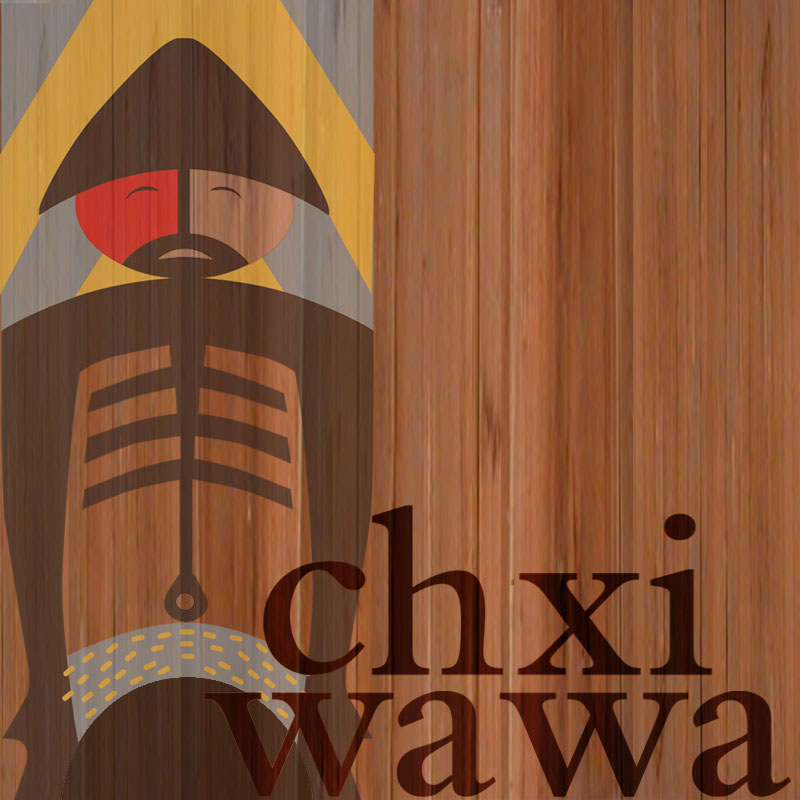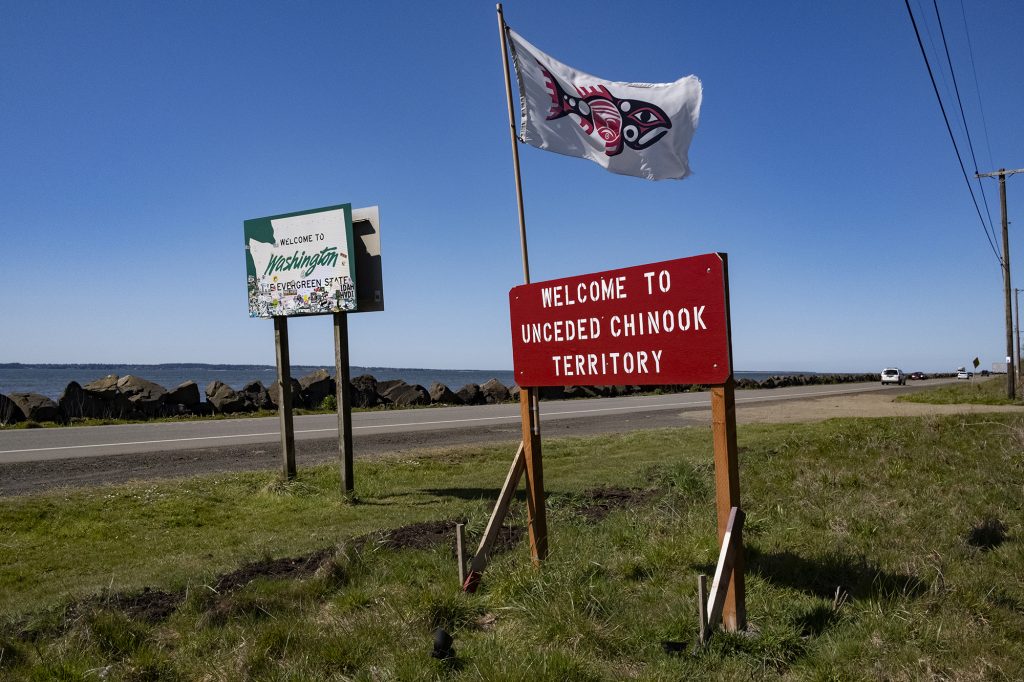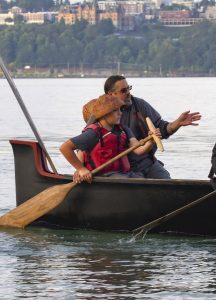Since time immemorial, members of the five tribes that comprise the Chinook Indian Nation spent their winters in a sheltered inland spot along a creek that feeds the Naselle River. The U.S. government forced Chinook people from their winter home and in the 1960s, Washington State converted the area to a juvenile detention center. Now, the state has closed the facility and is mulling a plan to return the land to the Chinook Indian Nation.
The Naselle Youth Camp, a juvenile detention facility, has been empty since state officials closed it in September 2022, with the exception of a single maintenance worker. In July, a task force was convened by the Washington state Office of Financial Management to help decide what to do next with the camp property and facilities.
The task force appears poised to recommend action aligned with calls from the Chinook Indian Nation for the return of the land and Naselle Youth Camp facility.
“Naselle is the place where our ancestors often lived in the winter,” said Gary Johnson, Chinook citizen and Chinook Chairman Tony Johnson’s father. “The mouth of the Columbia River was a place of frequent violent storms in the winter. The Naselle area offered protection.”
That’s in contrast to the nation’s current headquarters in Willapa Bay. While the current headquarters are threatened by sea level rise and would be completely destroyed by the impending megaquake and tsunami, the Naselle site is on a hillside and protected from flooding.
Naselle (nisal) is a Chinook word and the camp lands fall within the Chinook Indian Nation’s land claim boundary. Back in 1854 when the Chinook were asked what they wanted in exchange for their lands the Chinook said they would give up both sides of the Columbia River for the nisal, according to Chinook Chairman Tony Johnson.
Chairman Johnson calls the potential return of the Naselle Youth Camp a “generation-changing opportunity” for the nation. The plan would return 22.77 acres where the former youth detention facility sat. Along with the land, 34 structures, including a trout hatchery, a wastewater plant, housing, school buildings, a dental and medical building and even a greenhouse that were there to support the youth incarcerated at the facility, would be transferred to the nation. Those resources would now be put to use to support the cultural survival of the first people of that land.
“It has everything that we would want,” Chairman Johnson said. “It’s an absolutely amazing place.”
Transfer of ownership
In Jan., state senator Jeff Wilson introduced SB 5556. The law would have “transfer[d] ownership of the Naselle Youth Camp property to the Chinook Indian Nation in order to realize the highest and best use of an underutilized asset for the local community and the people.”
The bill was never heard. Senator Wilson worked in cooperation with Representative Jim Walsh who introduced an identical bill in the house, HB 1496, in January of last year. That bill never got a hearing either.
Senator Wilson asked Senator Sam Hunt, chairman of the State Government, Tribal Relations & Elections Committee, for a hearing on his bill. The Chinook Nation and their allies also called and emailed Senator Hunt, requesting he schedule a hearing for the bill.
“We had members of the local community reaching out in droves and the chairwoman of a neighboring tribe reached out and they still refuse to even give it a hearing,” Chairman Johnson said.
Senator Hunt didn’t answer multiple requests for comment.
Since his bill was unsuccessful, Wilson added a budget proviso to the 2023-2024 legislative budget proposal for a task force to make recommendations about the future of the Naselle property and facilities. The budget proviso required the inclusion of representatives from county commissioners, local school and education representatives, a citizen living near the Naselle property, the department of natural resources, the department of social and health services, the department of ecology, the office of financial management, the state senator and a state representative whose district represents the Naselle community.
It also required the inclusion of “the tribe located nearest the facility.”
However, The Washington State Office of Financial Management, which was required to convene the legislatively mandated task force, invited representation from the closest federally recognized tribe, the Shoalwater Bay Indian Tribe, instead of the Chinook Indian Nation, on whose ancestral lands the facility sits.
Senator Wilson shared the first task force meeting link with Chairman Johnson anyway.
“Establishing a Chinook voice on the task force was a challenge,” Gary Johnson said.
The Washington State Office of Financial Management hired Kauffman and Associates Inc. (KAI), a Native American-owned and -operated management consulting firm, to facilitate the task force and develop a report on its recommendations.
According to KAI meeting notes, Max Brown, the Washington Recovery Group program manager for the OFM, said that the OFM “interpreted the reference in the proviso to ‘the nearest tribe’ to be the nearest federally recognized tribe, but acknowledges that was not the language in the proviso and deferred to the task force regarding representation from the Chinook Indian Tribe to be included in the Task Force, alongside representation from the Shoalwater Bay Indian Tribe.”
Hayden Mackley, deputy communications director for the OFM told Underscore News in an email that OFM, “relied on Chapter 43.376 RCW, which addresses state agencies’ duties for government-to-government relationships with tribes and defines “Indian tribe” as any federally recognized Indian tribe whose traditional lands and territories included parts of Washington.”
When KAI hosted the first task force meeting, it didn’t acknowledge the presence of two members of the Chinook Indian Nation’s tribal council who were on the video call. Chairman Johnson says they had to interrupt as they were attempting to close the meeting to make sure they were acknowledged and to properly introduce themselves. He believes this was intentional.
Leigh Hayden, project manager III for KAI said in an email to Underscore News that KAI was not informed that anyone from the Chinook Nation was present. That didn’t stop people on the task force, including Rep. Walsh, from using their own introduction to advocate for the inclusion of the Chinook Nation in the task force and for the return of the land to the Chinook.
“Everybody local went around and said who they were, who they represented, and that they were basically there because they think the best use of the camp property is to give it to Chinook,” Chairman Johnson said.
Task force members encouraged the consultants to allow Shoalwater Bay Indian Tribal Chairwoman Charlene Nelson to stay, and insisted that the Chinook also get a seat on the task force. But at the second task force meeting, Chinook Chairman Tony Johnson was still not a member. According to Hayden, because the task force does not have an explicit governing structure, there was a question as to the legality of adding members and they needed additional time to verify if additional members could be added.
At the second task force meeting, Senator Wilson made a motion to make Chairman Johnson a full member, with his father as the alternate. The task force was asked whether they agreed to the motion to officially add Chinook Chairman Johnson as a member and everyone agreed. There was no dissenting opinion or discussion, according to Hayden.
Federal recognition
Chinook leaders believe resistance to their participation on the task force is due to them not being a federally recognized Native nation. Concerns about a state land transfer to a non-federally recognized tribe were raised by what KAI called, “local advisors” which is outside input from people who are not on the task force.
The addition of a local advisors input that, “Transfer of state land to non-federally recognized tribe could set a precedent (e.g., Duwamish),” was added to the task force meeting minutes on Aug. 17. This wasn’t a concern that was raised by anyone on the task force during any of the meetings.
Lacking essential resources because they are not federally recognized isn’t a new struggle for the Chinook Nation. This has been a nearly two centuries-long struggle with the U.S. government. Federal recognition is the process the U.S. government uses to determine a Native nation’s legitimacy through historical records although many Native nations largely passed down knowledge and tradition through oral histories. Having this status with the U.S. government would mean that the U.S. would have to honor their trust obligations for resources and protections for the Chinook Indian Nation and its citizens.
Without recognition, Chinook Nation citizens do not have access to medical care through Indian Health Services, and access to federal resources for housing and more for the overall welfare of the nation are out of reach. The Naselle facility would alleviate some of that need.
Chairman Johnson hopes the task force will continue to support the Chinook Nation as the rightful recipients of a facility built on their traditional lands.
“The final recommendations from Kauffman have to clearly prioritize giving the land back to the Chinook Indian Nation,” Chairman Johnson said. “Anything else would not represent the will of the taskforce. Further, the final decision makers need to do the research to understand that the voice of our Chinook community has to be the only tribal voice prioritized in this decision…After all the wealth that has been extracted from these lands, and with as little as our community now owns, the least the State of Washington can do is give us back this property and the facilities on it.”
Next steps
At the most recent task force meeting on Nov. 17, KAI evaluated and scored all possible options for the future of the Naselle facility. Facilitators marked their presentation green for positive, yellow for neutral, red for negative. The option to return Naselle to the Chinook was the only option that scored entirely positive, including the sub criteria for feasibility.
When KAI broke task force members into two groups and asked them to choose their top five options, returning Naselle to the Chinook was the number one option for both groups — echoing the sentiments of the first task force meeting in July. Other options included affordable housing, an outdoor school and inpatient behavioral healthcare: services the Chinook Nation could facilitate if the land was returned to them, according to Chairman Johnson.
“These are all things that we have both thought about, and believe that we can execute in the context of actually a viable solution,” Chairman Johnson said. “These ones that really aren’t viable independent of us, are viable with us. We think we can have an Oxford style drug and alcohol recovery house at the scale that makes sense for the location. We can operate a small-scale clinic that will meet the needs of local folks as well as the tribal folks that are there.”
Because of the unanimous support for the return of the facility to the Chinook, Chairman Johnson believes that KAI should present the return of the NYC to the Chinook as the only option in their proposed recommendations and report, instead of an available option.
“We will always strive to be the best neighbors possible, but they should give us the NYC regardless of our plans,” Chairman Johnson said. “We deserve a good place within our aboriginal territory to meet at, govern from, and where we can focus our cultural revitalization efforts.”
After the last meeting, KAI requested a presentation or conversation with the Chinook Nation in order to create a more in depth feasibility report evaluating Chinook Nation’s full vision for the Naselle Youth Camp land and facilities. “KAI wants to ensure the Chinook nation have the support they need to present the proposal to the task force,” Hayden said in an email.
According to Chairman Johnson, the nation will present their priorities for the facility at the task force’s Jan. 18 meeting. They hope to show how their plan aligns with their nation’s philosophies and tribal sensibilities.
KAI’s final report is due June 30. If the recommendation of the task force is to return Naselle to the Chinook Nation, that timing could build on the work of Senator Jeff Wilson. To pass, SB 5556 would need to be heard in Senator Hunt’s committee and passed out of committee by January 31st.
“The bill serves a purpose of what I believe is the consensus of everybody in that area,” Wilson said. “And quite frankly to get a chance to develop relationships with Indigenous groups and individuals. If in fact the bill passes and we can get it through and we return that property, that doesn’t mean we’re done with this. In fact, it creates an opportunity to work together going forward and that’s what I’m most excited about.”
Charlene Nelson, chairwoman of the Shoalwater Bay Indian Tribe, also believes the land should be returned to the Chinook.
“What’s right is to give back the land,” Nelson said. “There’s tribal people everywhere that either they’re lucky enough to have their original land or it’s gone and I think it’s really very important that we mend and… remember that we’re all equal.”








